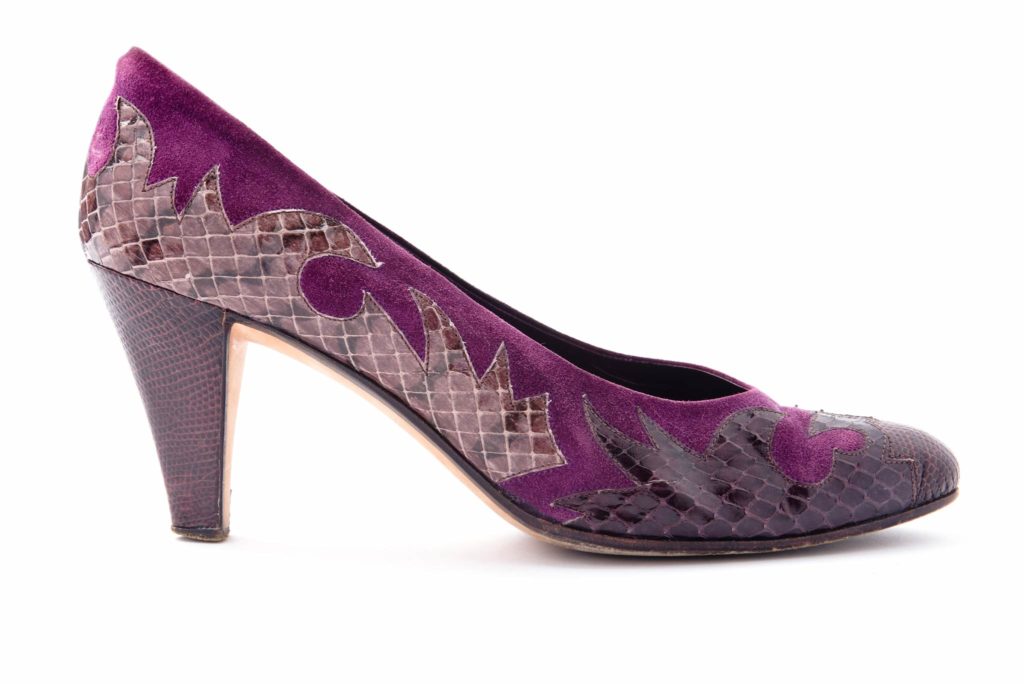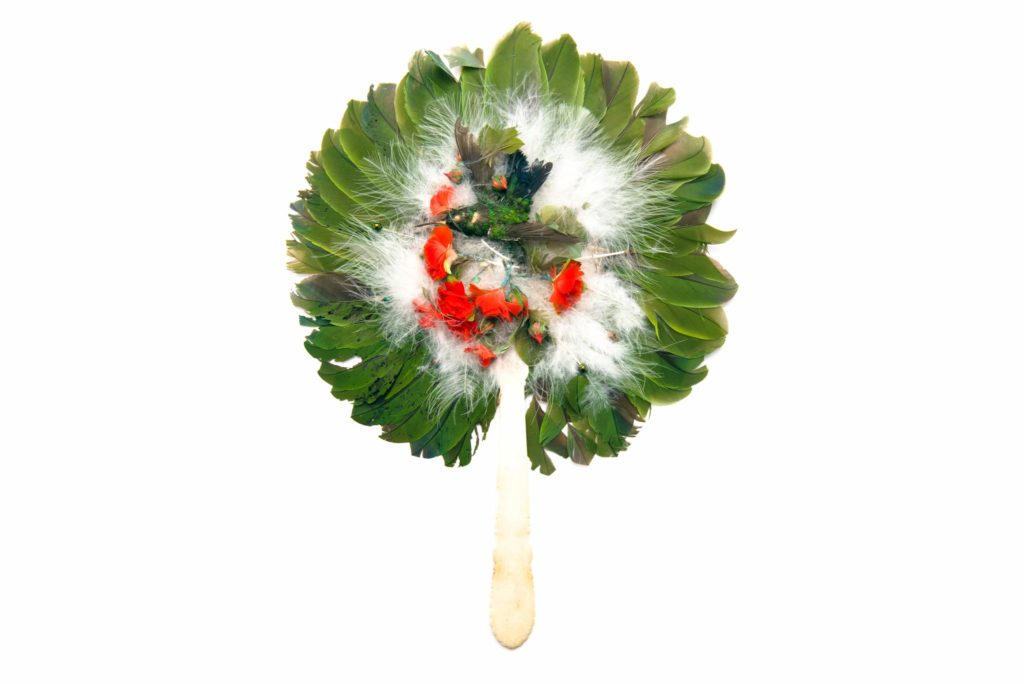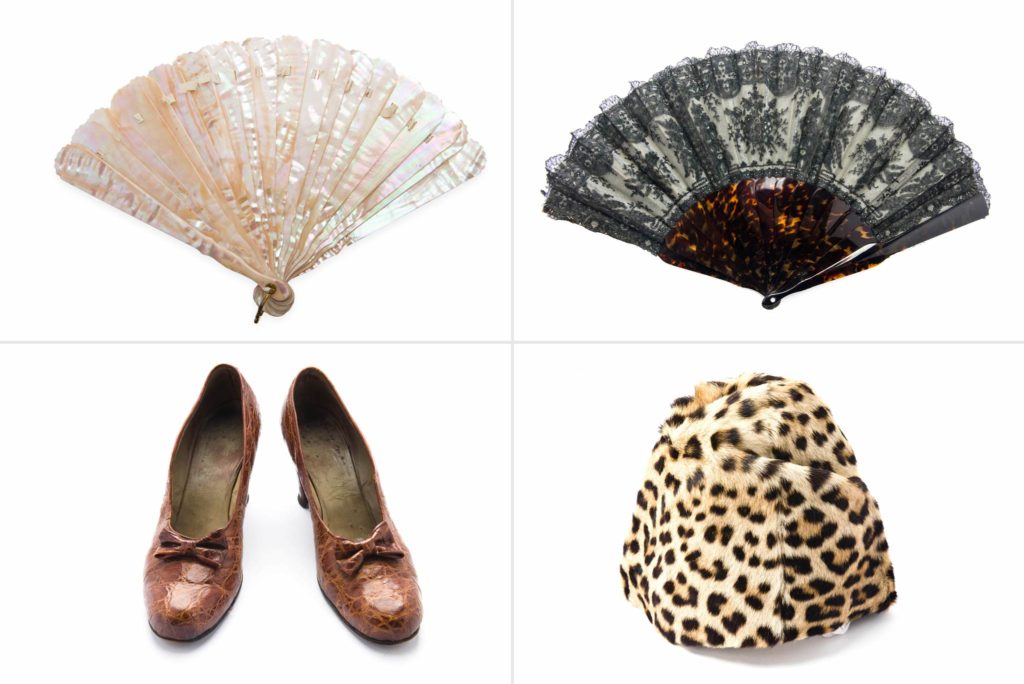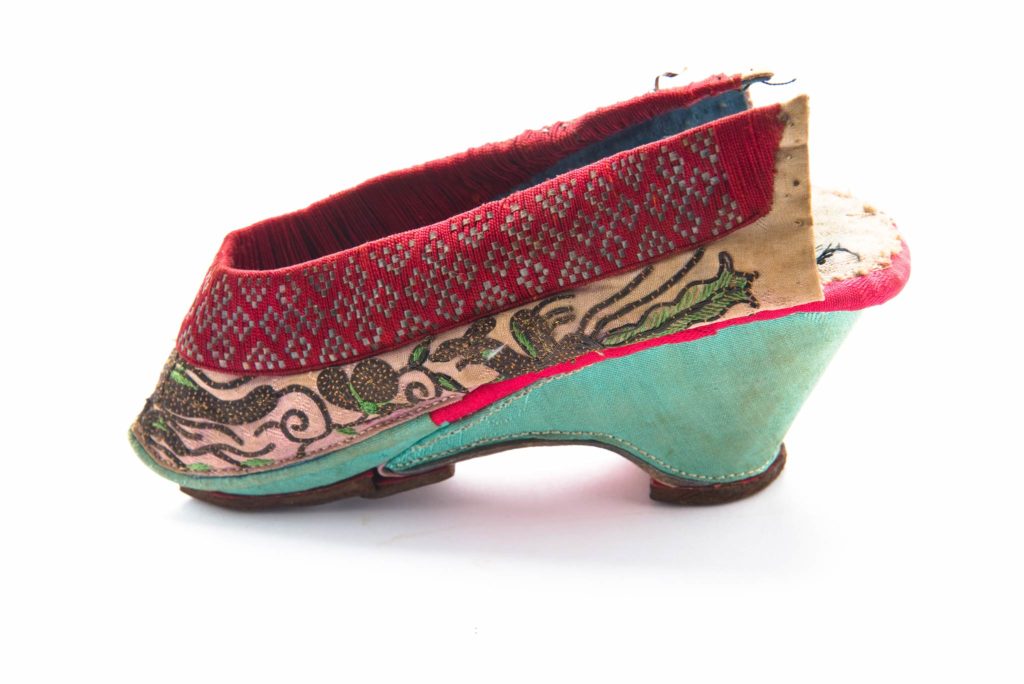Killer Fashion
In planning the next exhibition for our Textile Gallery, we thought it would be an interesting idea to look at fashions that not only decimated animal populations but also harmed the makers and wearers of these various fashion statements. Simple concept, right? Yes – and no. I was quickly overwhelmed by the possibilities and the numbers of fashions that impacted the resources, the makers and the wearers of these garments.
What started as a look into furs and feathers expanded to include a wide variety of fashion items that killed uncounted scores of mammals, birds, and even insects. This delightful – and deadly – feather fan made in Brazil , for example, bears a mounted hummingbird specimen, the population of which suffered greatly at the hands of hat and fan makers. Worse still, an 1892 edition of Punch magazine reported that one dealer in London received, as a single shipment, 32,000 dead hummingbirds, 80,000 aquatic birds and 800,000 pairs of wings! So immense was this feather fashion trade of the late 19th and early 20th century that it led to the founding of the Audubon Society in America and the Royal Society for the Protection of Birds in England.
Other animals sacrificed for fashion include mollusks for mother-of-pearl fans and buttons [image 4], as well as turtles for tortoise-shell accessories. Exotic species like the alligator, leopard and snake continue to suffer for their skin and fur and tiny cochineal beetles are still harvested today for their red dye and used in food-safe coloring. Even the lowly worm has contributed to high fashion, with the pupating larvae of the silkworm boiled to create yards and yards of silk fabric.
As I thought about fashion garments that were harmful to the wearer, of course Chinese foot binding first came to mind, along with excessive corsetry. But we must not forget the more traditional, and potentially harmful, women’s tight and pointed high-heeled shoes, men’s high starched collars and clothing colored with arsenic-laced dyes.
Besides the wearers, of course, makers of fashionable products have not fared well over time. From mercury used in felting men’s hats to toxic dyes developed to expand textile color choices to the harsh working environments of the mills and factories, textile and garment workers have been subjected to disease, dismemberment and even death. Many of these deadly chemicals were – and oftentimes still are – dumped into the environment, contaminating soil and water in devastating ways.
It has been a fascinating and rather depressing journey for me, finding all of this darkness amid a culture of beauty, but it is important to see the far-reaching consequences all in the name of fashion.
-by Jan Hiester, Historic Textiles Curator





